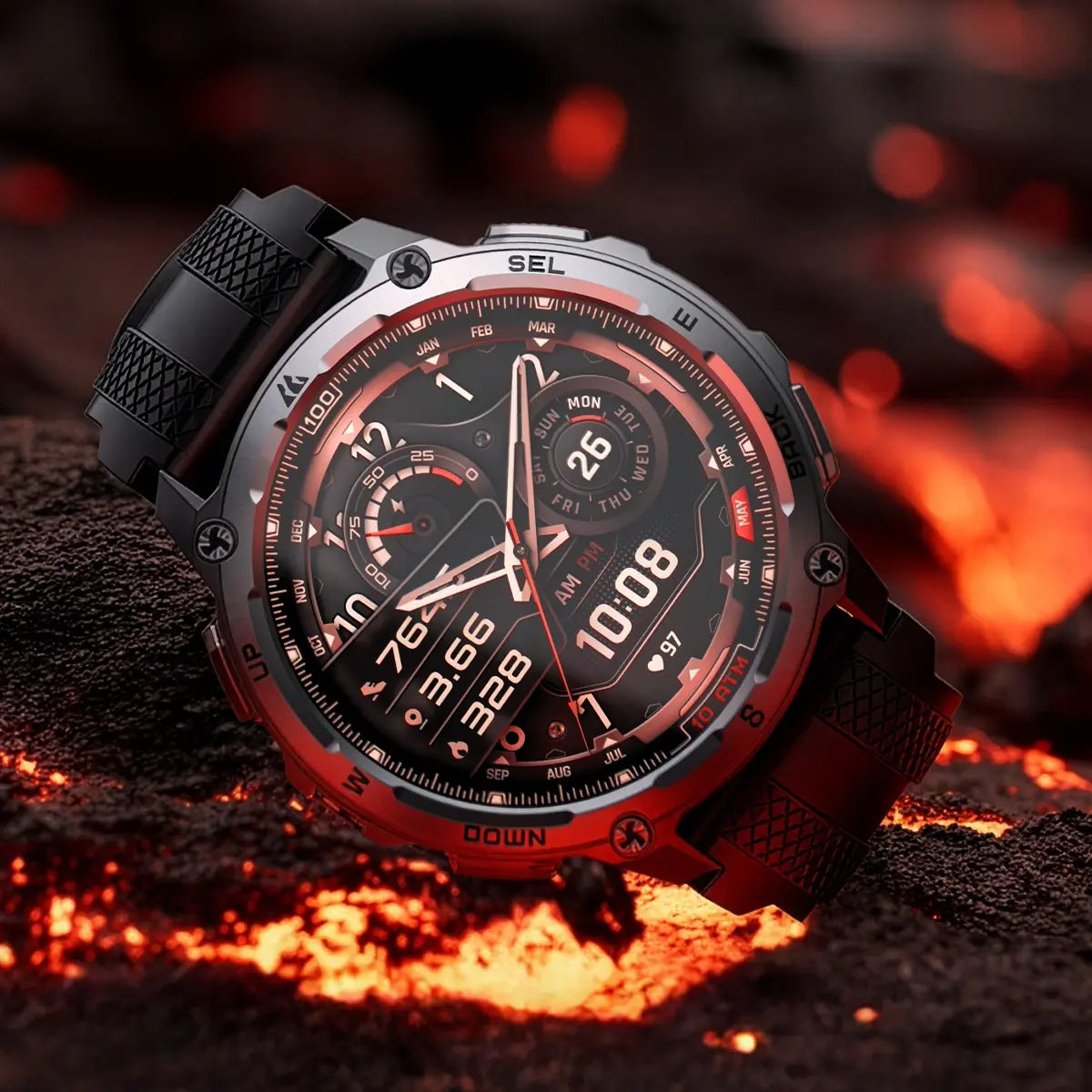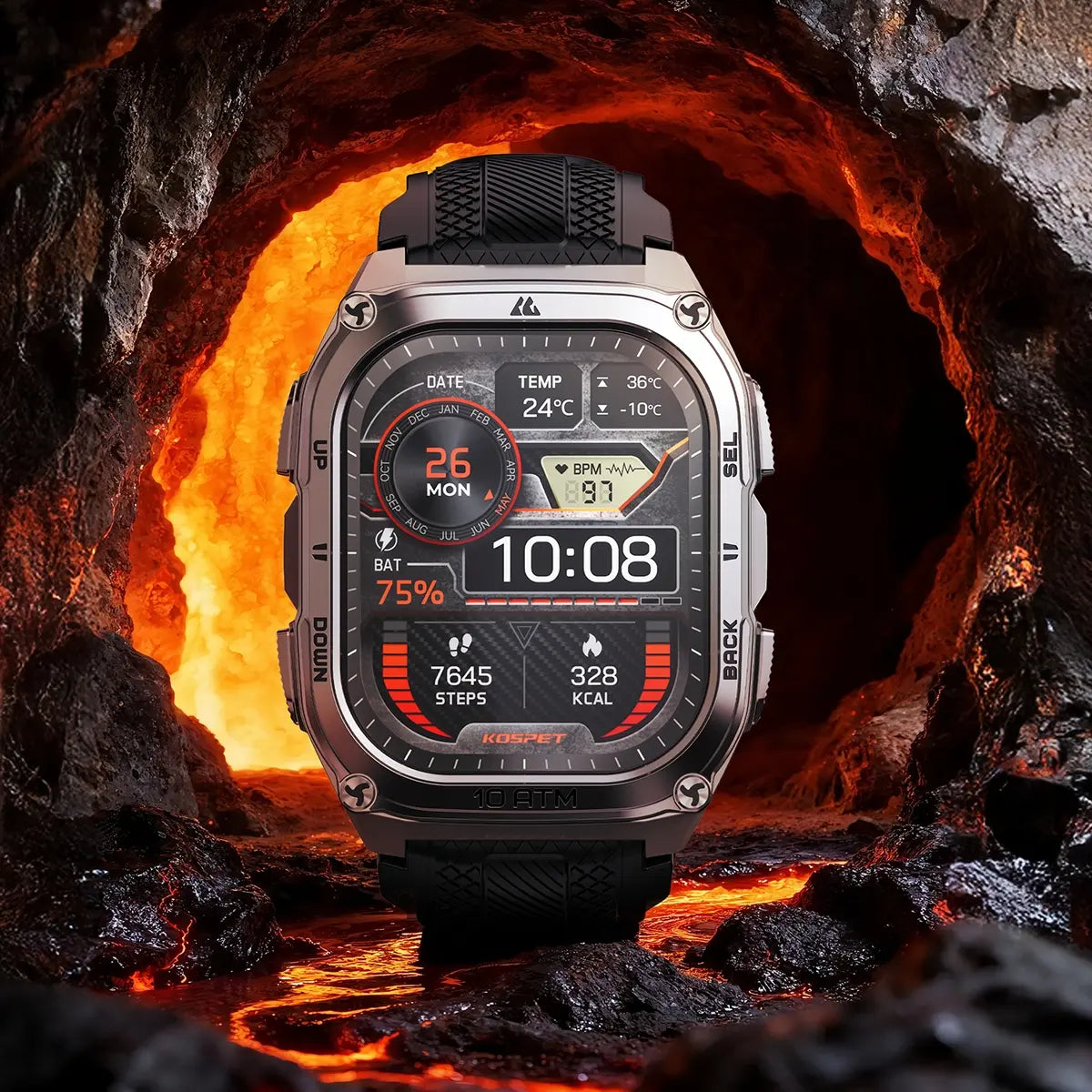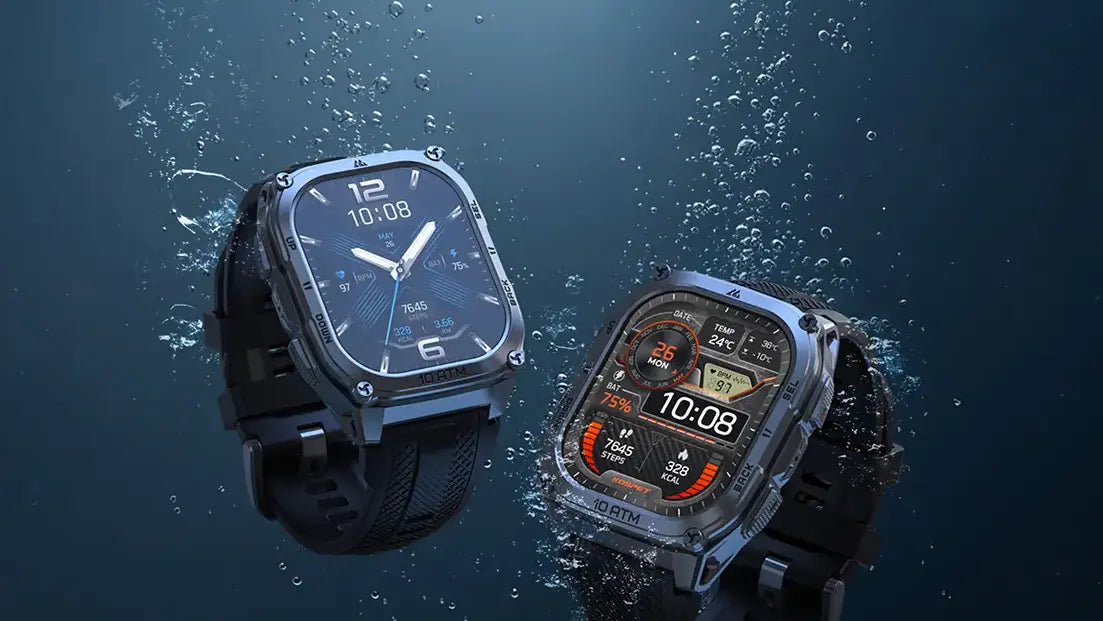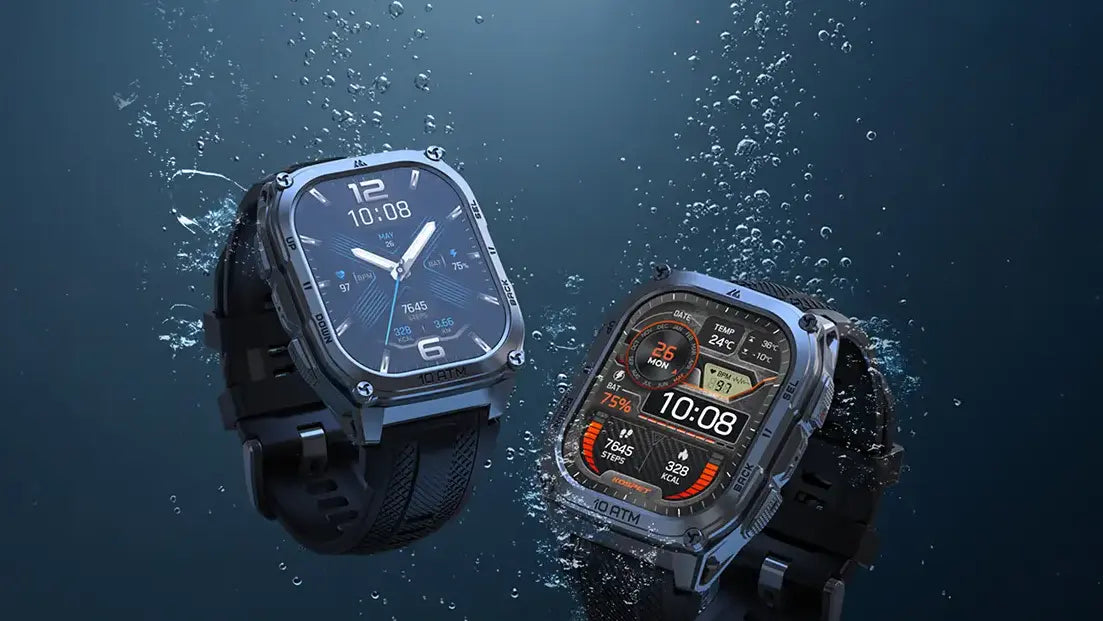In the outdoors, nothing stays dry for long. Rain seeps through tents, fog condenses on tools, and sweat corrodes metal faster than you think. A waterproof watch is one of the few instruments that must survive where you live — in the damp, the cold, and the unpredictable.
Yet many so-called “waterproof watches” fail not because they are weak, but because their owners misunderstand what waterproofing really means. To choose a watch that lasts, you have to see through the marketing language and understand the engineering beneath it.
What Waterproof Really Means in Watchmaking
The term “waterproof” sounds absolute, but no watch can resist water under every condition. The proper term in horology is water-resistant, which defines how much pressure a watch can withstand before moisture breaks through the case.
The standard that most everyday watches follow is ISO 22810, which tests the watch under static pressure — still water at controlled temperatures.
A true diving watch, certified under ISO 6425, undergoes far harsher trials: repeated pressurization, temperature variation, and saltwater corrosion. These aren’t marketing badges; they are mechanical qualifications.
When a watch clearly lists its testing standards, it reveals honesty in design. Brands that build for the field don’t hide their numbers. They design, test, and measure because they know water never forgives assumption.
Waterproofing is not about perfection. It’s about how precisely the maker defines the boundary between resistance and failure.
How Waterproof Ratings Should Be Understood
Those familiar “30 m”, “50 m”, or “100 m” markings are often misread. They refer to laboratory test pressure, not actual diving depth. The testing simulates the static force of water, not the dynamic stresses caused by movement, temperature, or impact.
- 3 ATM (30 m) – Resists splashes, sweat, and brief rain exposure.
- 5 ATM (50 m) – Withstands swimming or showering, but not prolonged submersion.
- 10 ATM (100 m) – Handles snorkeling and shallow dives.
- 20 ATM (200 m) – Designed for professional diving environments.
What truly matters isn’t the number — it’s how the structure supports that rating.
A well-sealed 5 ATM case with double gaskets and a threaded crown can outlast a poorly built 10 ATM one. Waterproof reliability comes from mechanical integrity, not from printed depth claims.
Numbers summarize tests. Structure tells the truth.
How Environment Shapes Real Waterproofing
Different environments destroy watches in different ways.
Freshwater, saltwater, steam, and humidity each attack seals through their own mechanisms. Salt crystallizes inside joints; heat softens rubber; cold contracts metal, breaking the seal microscopically.
For daily life, a 5 ATM watch handles most contact — rain, washing, or swimming pools.
For fieldwork or marine activity, 10 ATM and above gives the safety margin needed for turbulence and pressure spikes.
In diving, a 20 ATM watch with screw-down components becomes essential, not optional.
Waterproofing is never one-size-fits-all. It’s a calibration between condition, duration, and design. The right watch is the one that fits your environment, not your lifestyle image.
Why Structure Matters More Than Features
A strong waterproof case looks simple but hides deliberate complexity.
Three elements define its defense: the crown, the caseback, and the gaskets.
A screw-down crown creates mechanical compression that keeps pressure out.
A threaded caseback ensures uniform sealing, preventing uneven stress that leads to leaks.
Rubber or fluorocarbon gaskets provide elasticity against temperature change and age far better than glue.
Material choice deepens the protection. Stainless steel and titanium resist corrosion; ceramic repels salt; passivation layers prevent oxidation on metal surfaces.
Good engineering feels different — the crown turns firmly, the back locks with resistance, the joints are clean. That tactile precision isn’t decoration; it’s durability you can sense with your fingertips.
Smartwatches and the Challenge of True Waterproofing
Adding electronics complicates everything. Each extra sensor, port, or speaker is another entry point for moisture.
High-end waterproof smartwatches solve this through magnetic charging systems, encapsulated sensors, and integrated unibody shells that minimize seams.
Instead of relying on glue or silicone fillers, these designs use structural sealing — the same principle found in diving equipment.
When evaluating any smartwatch, pay attention to how it manages these weak points. The fewer exposed elements you see, the more you can trust the watch in the rain or underwater.
Real waterproof technology isn’t about how smart the device is; it’s about how much failure it can quietly prevent.
Endurance: The Forgotten Half of Waterproofing
Water resistance is not only defined by ATM or IP ratings. In real use, long-term reliability depends on how long the watch can stay sealed without frequent charging, wiping, cleaning, or any form of manual handling.
A watch that runs longer on a single charge remains closed for a longer period of time, which helps protect the sealing structure from moisture, salt, dust, and temperature stress.
Within this concept, the TANK series approaches waterproof capability with different priorities that align with real-world use rather than a single number on paper.
TANK T3U2
TANK T3U2 focuses on long operational endurance so it can stay powered for extended periods without requiring user intervention. This usage pattern benefits waterproof reliability because the watch can remain sealed for several days or even weeks without opening or connecting to a charger.
It is suitable for users who travel, explore, or frequently stay around water where access to stable charging is limited and maintaining a closed system is a practical advantage.
TANK M3U
TANK M3U emphasizes structural strength and durability in environments with salt, moisture, wind, and surface abrasion. Its reinforced build is intended for climates where corrosion and mechanical stress may gradually damage sealing points.
It is suitable for coastal areas, marine activities, boat work, fishing environments, or locations with long-term humidity exposure where physical resilience can support waterproof integrity.
TANK T3
TANK T3 is designed for continuous everyday wear and regular contact with fresh water such as swimming pools, showers, rain, and sweat. The value of its waterproof performance comes from stable daily use with minimal interruptions, allowing the user to wear it for long stretches without removing it or charging frequently.
Its strength lies in day-to-day reliability rather than extreme scenarios, making it ideal for routine water exposure with consistent seal protection.
TANK M3
TANK M3 focuses on outdoor field environments where water is combined with dirt, vibration, cold temperatures, rough movements, and limited charging opportunities. It is suitable for hiking, camping, paddling, and wet terrain where endurance helps reduce device handling. Its waterproof value comes from its ability to continue operating in mixed outdoor conditions that challenge both the seal and the structure at the same time.
Key Takeaway
Waterproofing is not only about how deep a watch can go but also how long it can stay sealed throughout real use. When a watch combines structural protection with reliable endurance, the sealing system maintains its integrity longer and delivers more meaningful waterproof performance over time.
Maintaining Reliability Through Routine
Even the best seals degrade. Rubber hardens, metal shifts, and the constant cycle of wet and dry wears the tolerance down.
Regular care keeps the protection alive. After exposure to saltwater or mud, rinse with clean water and let the watch dry naturally. Steam and hot water accelerate material fatigue — avoid them.
Pressure testing once a year, especially after any battery change, restores confidence in the integrity of the case.
Maintenance is not about fear of failure; it is about respecting the physics of materials. A waterproof watch that lasts five years without inspection owes more to luck than to design.
Common Misunderstandings That Ruin Waterproof Watches
Many users trust numbers more than knowledge, and that’s where failure begins.
Can a watch rated for 50 meters handle swimming? Not reliably. The rating reflects static lab conditions, not the dynamic force of water in motion.
Does an IP68 smartwatch resist all water? No. IP tests use clean, still water at mild temperatures — salt, heat, and chlorine destroy seals faster than pressure ever will.
Are new watches automatically safe? Not always. A single misaligned gasket can leak from the start, and factory quality control cannot simulate real use.
Verification matters more than assumption. Pressure-test before trust, rinse after use, and never let convenience replace awareness. Reliability starts with understanding where your watch can fail — and acting before it does.
How to Choose a Waterproof Watch That Truly Fits Your Life
A good choice begins with knowing your reality.
Every environment demands its own priorities: divers need pressure tolerance, hikers need battery life, engineers need corrosion resistance.
The sensible way to decide is to balance three axes: environment, duration, and recovery.
- Environment defines what forces your watch will face.
- Duration decides how long it must endure without maintenance.
- Recovery measures how easily it can be serviced or replaced if damaged.
When these three align with your routine, the watch becomes an extension of you, not an accessory. Waterproofing is not about surviving one storm — it’s about functioning through years of them.
Conclusion
A well-built waterproof watch represents trust earned through precision.Each screw thread, seal, and polished surface exists to give you one quiet assurance: when the sky breaks open, time will keep running.
The beauty of real waterproofing is not in how deep it can go, but in how calmly it performs under pressure — again and again.That quiet reliability, invisible to everyone else, is what separates equipment from decoration, and experience from assumption.
FAQs
How waterproof is a waterproof watch?
A waterproof watch resists water within tested pressure limits. Its protection depends on structural design, not just the rated depth printed on the case.
Can I wear a waterproof watch in hot water or a sauna?
No. Heat and steam damage seals faster than pressure does. Even the best waterproof watch should be kept away from hot showers or saunas.
How often should I test a waterproof watch?
Once a year or after any battery change. Regular pressure testing ensures the seals still perform as intended under real conditions.










Оставить комментарий
Все комментарии перед публикацией проходят модерацию.
Этот веб-сайт защищается hCaptcha. Применяются Политика конфиденциальности и Условия использования hCaptcha.